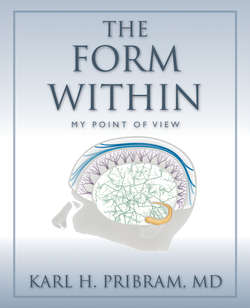Читать книгу The Form Within - Karl H Pribram - Страница 59
На сайте Литреса книга снята с продажи.
Fourier the Man
ОглавлениеIn addition to being given the opportunity to learn something about Arab mathematics firsthand, Fourier was put in charge of recording and describing Egyptian cultural artifacts for the expedition; he and his team made sketches of the architecture, sculpture and painting. In many instances, these sketches remain the only record we have of Egyptian monuments that have subsequently been destroyed. Fourier spent the rest of his life preparing these sketches for publication and providing financial and intellectual support for young Egyptologists such as his protégé Champollion, famed for deciphering Egyptian hieroglyphics by using the Rosetta stone (brought back to Europe by the same expedition).
On his return to Paris, Fourier first presented his “Analytic Theory of Heat” that had attained some maturity during his tour in Egypt. Within two weeks of this presentation, Laplace countered with a refutation showing that Fourier had not worked out an acceptable proof of his theoretical formulation. Laplace was correct in his critique of Fourier’s proof: it took many years before a plausible proof was worked out. But the overriding importance of the tool that Fourier had devised for the measurement of the spectrum of heat made it possible for him to continue his mathematical explorations.
Fourier persisted. He had been appointed head of his local prefecture and paid for the publication of his fur- ther work using the salary of his office. Meanwhile, a great many scientists and engineers were using his technique to solve their problems in a variety of disciplines. After a decade, when Fourier was awarded a prestigious prize, Laplace began to support the publication of his work and his election to the French Academy of Sciences.
Over nearly two centuries, Fourier’s theorem has become widely regarded as a most useful formula for measuring and predicting recurring patterns—from those characterizing bull and bear markets in the stock exchange to possible meltdowns in nuclear reactors. Richard Feynman, the noted Nobel laureate in physics, stated in his lectures (Feynman, Leighton and Sands, 1963) that Fourier’s theorem is probably the most far-reaching principle of mathematical physics.
As expressed by my colleagues at the University of California at Berkeley, professors of physiology Russell and Karen DeValois, there is every reason to expect this over-arching formulation to also play a key role in how we can understand sensory processes: “Linear systems analysis originated in a striking mathematical discovery by a French Physicist, Baron Jean Fourier, in 1822 . . . [, which] has found wide application in physics and engineering for a century and a half. It has also served as the principal basis for understanding hearing since its application to audition by Ohm (1843) and Helmholtz (1877). The successful application of these procedures to the study of visual processes has come only in the last two decades” (DeValois and DeValois, Spatial Vision, 1988).
